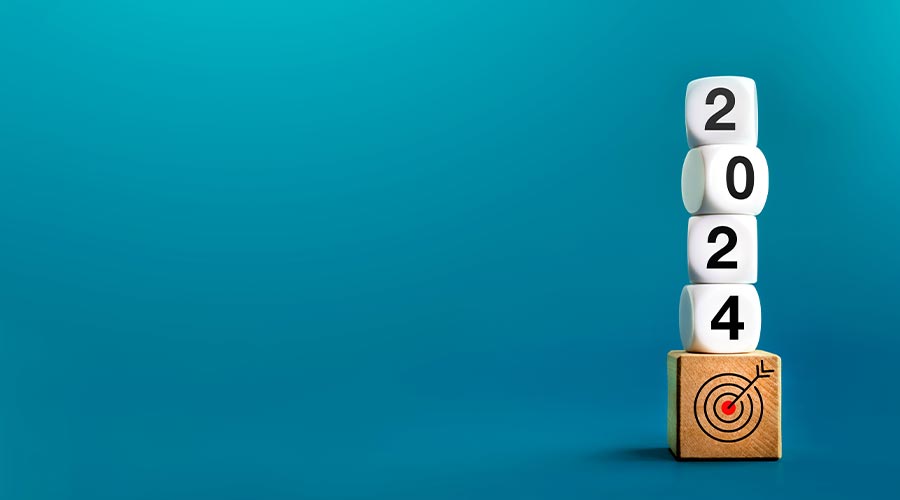
Contributed by Robert Stelling, Director Interclean Global Events at RAI Amsterdam
Get ready to witness a dazzling future where sparkling floors, shiny windows and sanitized surfaces are just the tip of the iceberg. 2024 has exciting things in store for the cleaning and hygiene industry, with innovations that will set a new standard for clean, making hygiene more efficient and effective than ever before. These advancements promise to change the way we think about and achieve clean in various sectors.
From healthcare facilities battling invisible threats to bustling restaurants seeking germ-free dining experiences, hygiene is entering an exciting new era of digitalization, sustainability, and human-focused innovation.
1. VR and AR revolutionize training and work
Imagine cleaning crews wearing virtual reality headsets, tackling simulated biohazard spills and mastering complex cleaning protocols in immersive training programs. Or envision augmented reality overlays guiding cleaners in real-time, highlighting hotspots and optimizing routes. This is no longer science fiction – VR and AR are transforming training, enhancing skills, and boosting efficiency in cleaning operations.
2. IoT sensors at the forefront of the 2024 hygiene revolution
Forget about guesswork and intuition. Imagine buildings with smart sensors that monitor air quality, track occupant movement, and even detect pathogens in real-time. These data-driven guardians guide cleaning efforts, ensuring targeted hygiene is in place where it's needed most – from high-traffic areas to germ-sensitive zones. This hyper-awareness revolutionizes cleaning, shifting from reactive to proactive, and ensuring optimal hygiene every step of the way.
3. Data-driven hygiene, digitalization, and AI transform professional cleaning
Big data isn't just for Wall Street anymore. Cleaning companies are harnessing its power to analyze cleaning patterns, predict equipment failures, and customize cleaning schedules based on real-time data. Imagine AI systems optimizing resource allocation, suggesting the most effective cleaning methods, and even automatically deploying robot cleaners – all in real-time. This is the future of data-driven hygiene, where meticulous analysis replaces guesswork and maximizes efficiency.
4. Navigating data privacy concerns in AI-powered hygiene and cleaning
As data becomes the gold standard, concerns about privacy are bound to arise. This is where transparency and ethical practices take centre stage. Expect to see regulations, protocols and frameworks ensuring responsible data collection, usage, and anonymization - safeguarding individual privacy while harnessing the amazing power of data for a cleaner future.
5. Wearable tech innovations
Imagine wristbands monitoring cleaners' well-being, guiding them through tasks and even tracking cleaning progress, or smart glasses displaying instructions and highlighting problem areas. Exoskeletons will reduce physical strain and improve ergonomics. Wearable tech can empower cleaning staff, optimizing their workflows and ensuring ideal standards of hygiene and sanitization.
6. Cost savings
Forget about tightening your budget just to maintain hygiene standards. Automation, data-driven efficiency, and reduced waste through green cleaning solutions are driving significant cost savings. Expect to see investments in innovation yielding impressive financial returns, without sacrificing desired standards of cleanliness and hygiene.
7. Smaller size design innovations offer impressive functionality
Size isn't everything. Miniaturized robots are compact and nimble — able to conquer tight spaces and navigate intricate equipment, disinfecting areas which were previously inaccessible. This design revolution promises to expand the reach of hygiene efforts, leaving no nook or cranny unattended to.
8. Innovative solutions for healthcare cleaning
Healthcare facilities face unique challenges, battling unseen threats and striving to protect vulnerable patients. Expect to see breakthroughs in UV-C disinfection robots, germ-killing fabrics for surfaces, and even AI-powered sanitation protocols, all working together to create a safer, healthier environment for patients, staff and visitors alike.
9. Sustainability and ESG innovations take center stage
The cleaning industry is going green! Biodegradable cleaning agents, recycled materials for tools and packaging, and energy-efficient equipment are on the rise. ESG (Environmental, Social, and Governance) principles are influencing procurement decisions, promoting ethical practices and encouraging responsible sourcing within the industry. This eco-conscious revolution promises not only a cleaner planet but also a more accountable and sustainable cleaning industry.
10. Attracting and retaining staff
Innovation doesn't replace the human touch. Cleaners are the heroes of hygiene, and retaining their expertise is critical. Expect to see initiatives like training programs for using new technologies, competitive wages and benefits, and opportunities for career advancement to attract and retain top talent. This recruitment revolution recognizes the vital role of cleaners in creating a sparkling future.
For more trends, download Interclean’s new report here. Registration for Interclean events here.
Robert Stelling is the Director of Interclean Global Events at RAI Amsterdam.
posted on 2/27/2024

 Celebrating BSCAI's 60th Anniversary eBook
Celebrating BSCAI's 60th Anniversary eBook The Down and Dirty on Cleaning in Virus Season
The Down and Dirty on Cleaning in Virus Season How Surfactant Use is Expanding in Commercial Cleaning
How Surfactant Use is Expanding in Commercial Cleaning